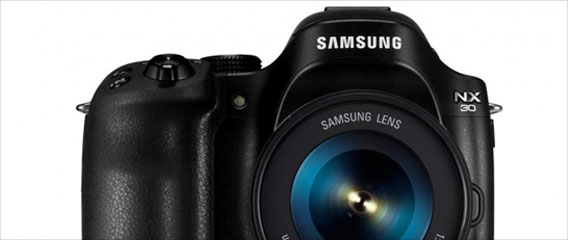FEWER BUT BETTER CAMERAS AND CAMCORDERS, LOOKING AT CES 2014 DIGITAL CAMERA TRENDS
Fewer new introductions, but better models
 Smartphones will continue to dominate casual photography, affecting the sales of low- to midrange cameras (most will argue that they have already taken over the market). Ditto for camcorders. The difference is that camera makers have finally seen (and acknowledged) this reality, and, we predict, will introduce far fewer models than previous years. Camera makers will still dabble in the low end (there is still a market for point-and-shoot cameras globally), but don’t expect new products to be as abundant moving forward. Case in point: Samsung, which announced products ahead of the show, introduced just two new evolutionary models – compared to the eight cameras it unveiled at CES 2013 There’s a chance that they might announce additional cameras when the show starts, but, for a company that’s blending its cameras with its strength in smartphones, we aren’t sure if there’ll be as many budget or even mid-tier cams as before.
Smartphones will continue to dominate casual photography, affecting the sales of low- to midrange cameras (most will argue that they have already taken over the market). Ditto for camcorders. The difference is that camera makers have finally seen (and acknowledged) this reality, and, we predict, will introduce far fewer models than previous years. Camera makers will still dabble in the low end (there is still a market for point-and-shoot cameras globally), but don’t expect new products to be as abundant moving forward. Case in point: Samsung, which announced products ahead of the show, introduced just two new evolutionary models – compared to the eight cameras it unveiled at CES 2013 There’s a chance that they might announce additional cameras when the show starts, but, for a company that’s blending its cameras with its strength in smartphones, we aren’t sure if there’ll be as many budget or even mid-tier cams as before.
But, as we’ve mentioned before, new cameras are going to be stronger and pack with more features, and we expect that to be the case. Gone is the single-function, slow performing point-and-shoots; even the most affordable cameras will be better and connected. If camera companies are going to compete against smartphones, they will need to ditch the thinking that budget equates fewer features.
Then again, the camera companies could surprise us when the show opens, so anything’s possible.
More important camera show around the corner
But the whole smartphone conundrum may not be the only reason why there might be fewer models introduced. CES, as its name suggests, targets the consumer, and camera makers may only be announcing the products that’s relevant to this sector and holding back the really good stuff for later in the year. The CP+ Camera and Photo Imaging Show takes place in February, not long after CES, so there’s a possibility that camera makers are waiting until then. And WPPI, a much smaller tradeshow geared toward pros working in wedding and portrait photography, happens in March, so it’s also possible the professional equipment are being reserved for that show.
The one important show for photography to keep in mind, however, is Photokina, one of the biggest and most important imaging-related tradeshows that happens every two years – 2014 happens to be that year, taking place in Cologne, Germany. While it’s far later down the line in September, we expect to see some great showings. However, with the industry going the way it is, things might be different at Photokina, as well, than back in 2012.
One thing to note, however, is that, despite CES being an important show for buyers and consumers, it’s difficult for companies to stick to a schedule dictated by a tradeshow. Apple stopped participating in Macworld many years ago for this reason, instead choosing to set its announcements based on its timetable. Microsoft pulled out at exhibiting at CES a few years back. Camera companies might be following this strategy as well (Sony announced a bunch of high-profile products toward the end of last year, so we doubt they’ll do the same at CES).
Wi-Fi and NFC
 Connectivity is no longer an option, but a must-have feature. Expect to see even the most affordable new point-and-shoot to having Wi-Fi built in. Although the Wi-Fi implantation in many digital cameras is still somewhat iffy, and whether or not consumers enjoy pairing their cameras with smartphones is questionable (not to mention the battery life Wi-Fi sucks up), cameras need to offer the option of having wireless onboard, to go toe-to-toe with smartphones. Some may see it as a losing battle, but there’s lots you can do with Wi-Fi when it’s done right (see Sony and Samsung).
Connectivity is no longer an option, but a must-have feature. Expect to see even the most affordable new point-and-shoot to having Wi-Fi built in. Although the Wi-Fi implantation in many digital cameras is still somewhat iffy, and whether or not consumers enjoy pairing their cameras with smartphones is questionable (not to mention the battery life Wi-Fi sucks up), cameras need to offer the option of having wireless onboard, to go toe-to-toe with smartphones. Some may see it as a losing battle, but there’s lots you can do with Wi-Fi when it’s done right (see Sony and Samsung).
One feature we may see more of in 2014 is NFC, or near-field communication. Used to quickly pair a camera with a smartphone just by touching the two together (similar to tapping a card at a retailer’s checkout or mass transit entrance), NFC eliminates the multi-step process required to pair the two devices. It’s all well and good, and it does work, but it’s a feature that’s not found in all devices, just a handful of Android smartphones. A big reason why it won’t be popular: Apple doesn’t support it in iPhones, and there’s no indication it ever will. We said last year that it isn’t a feature you should base your camera purchasing decision around, and we think that’s still the case.
Camera companies calling it quits?
This topic is highly controversial, but some industry analysts have suggested that some camera companies may not be around for much longer. Recently a Credit Suisse analyst said Panasonic, Olympus, and Fujifilm could pull out of the camera business based on financial losses and lack of growth in the mirrorless sector – an area all three companies have invested heavily in. IDC analyst Chris Chute even said Nikon could be in trouble. Outrageous claims, considering the long history all these companies have, but recent financial-related news aren’t good either.
The one to watch out for is Panasonic. The company has been aggressively restructuring the company to ensure profitability moving forward. It ended TV production, which is huge news. It has indicated that it’s not shy in cutting out other loss-making business units, and that points to digital imaging. The company recently entered a joint venture, which will spin off its semiconductor business into a partnership with TowerJazz. That includes equipment that makes digital imaging components. With these moves, we wonder if CES 2014 might be Panasonic’s last.

© 2014 Copyright ShootTheCenterfold.com. All rights reserved.




















